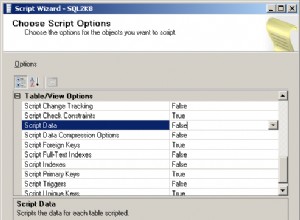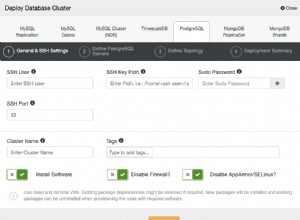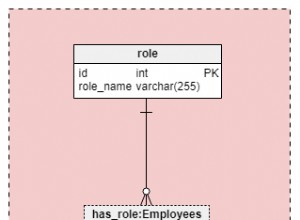Myślę, że brakuje Ci sqlCom.ExecuteNonQuery();
także, zamiast uruchamiać wybierz func_test(7) z dual; przełączmy go, aby uruchomić funkcję i przekazać parametr
OracleConnection oracleCon = new OracleConnection(ConfigurationManager.ConnectionStrings["MyConnectionString"].ConnectionString);
// Set the command
string anonymous_block = "begin " +
" :refcursor1 := func_test(7) ;" +
"end;";
//fill in your function and variables via the above example
OracleCommand sqlCom= con.CreateCommand();
sqlCom.CommandText = anonymous_block;
// Bind
sqlCom.Parameters.Add("refcursor1", OracleDbType.RefCursor);
sqlCom.Parameters[0].Direction = ParameterDirection.ReturnValue;
try
{
// Execute command; Have the parameters populated
sqlCom.ExecuteNonQuery();
// Create the OracleDataAdapter
OracleDataAdapter da = new OracleDataAdapter(sqlCom);
// Populate a DataSet with refcursor1.
DataSet ds = new DataSet();
da.Fill(ds, "refcursor1", (OracleRefCursor)(sqlCom.Parameters["refcursor1"].Value));
// Print out the field count the REF Cursor
Console.WriteLine("Field count: " + ds.Tables["refcursor1"].Columns.Count);
}
catch (Exception e)
{
Console.WriteLine("Error: {0}", e.Message);
}
finally
{
// Dispose OracleCommand object
cmd.Dispose();
// Close and Dispose OracleConnection object
con.Close();
con.Dispose();}
jest to oparte na przykładowym ODP, który można znaleźć @ %ora_home%\Client_1\ODP.NET\samples\RefCursor\Sample5.csproj
Jeśli chcesz uniknąć (na lepsze lub gorsze!) niestandardowej kolekcji parametrów dla każdego wywołania procedury/funkcji, którą możesz obejść, wykorzystując anonimowe bloki w swoim kodzie, poprawiłem (po raz kolejny nie przetestowałem!) powyższy kod, aby odzwierciedlić ta technika.Oto fajny blog (od nikogo innego jak Mark Williams) przedstawiający tę technikę.http://oradim.blogspot.com/2007/04/odpnet-tip-anonymous-plsql-and.html




